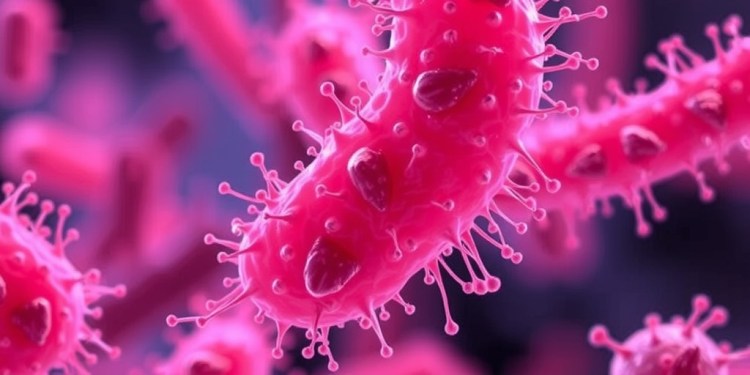
Bacteria, highly adaptable organisms known for their versatility in various environments, have recently become the focus of groundbreaking research aimed at enhancing their utility as sensors for environmental monitoring. Engineers at the Massachusetts Institute of Technology (MIT) have developed a novel approach that endows these microorganisms with the ability to produce distinct colors in response to specific chemical signals. This innovative capability allows for the remote detection of bacterial activities from impressive distances, marking a significant advancement in biotechnological applications.
Traditionally, the ability of bacteria to sense and respond to environmental cues has been a subject of scientific exploration, resulting in various methods to engineer these organisms for the detection of pollutants or nutrient levels. However, many existing techniques require the use of sensitive equipment or microscopic analysis, making them less practical for widespread applications. The new method emerging from MIT overcomes these limitations by utilizing engineered bacterial cells programmed to generate unique combinations of colors, which can be interpreted from hundreds of meters away using advanced imaging technologies.
The researchers’ primary objective was to facilitate the monitoring of bacterial signals without the need for direct visual contact. As the principal investigator Christopher Voigt emphasized, this technology represents a significant leap forward: while standard bacterial sensors are invisible to the naked eye from close proximity, they can be monitored effectively over long distances through hyperspectral cameras designed to capture a wide range of light spectra. This approach allows researchers and agricultural professionals to engage with biological signals in real time, presenting unparalleled advantages for environmental observatories and remote sensing applications.
In their study published in the prestigious journal Nature Biotechnology, the MIT team demonstrated the engineering of two specific bacterial strains to produce reporter molecules capable of emitting light across both visible and infrared spectra. By linking these outputs to genetic circuits designed to detect nearby bacteria, the researchers have created a versatile system, capable of being adapted to various existing sensors for different pollutants, including toxic substances like arsenic. This modularity in design offers tremendous potential for customizing bacterial sensors to specific environmental needs.
One significant insight regarding the developed technology involves the simultaneous imaging of multiple wavelengths of light through hyperspectral cameras. These sophisticated devices are skilled at analyzing vast amounts of spectral data, providing a richer insight into the chemical landscape of an area. Unlike conventional sensors that only report binary output, the hyperspectral approach captures intricate changes in light emitted by the bacteria, presenting a wealth of data that can be critically analyzed for environmental assessment.
To establish the effectiveness of their engineered biosensors, the research team conducted extensive tests, deploying the bacteria in various ecological settings—fields, deserts, and urban rooftops. They fashioned containment boxes to house the bacteria, ensuring that their outputs could be accurately measured without external contamination. Using drones outfitted with hyperspectral cameras, the researchers successfully demonstrated the ability to detect bacterial signals from up to 90 meters away, a distance they aim to increase through ongoing developments and refinements to their methodology.
The implications of such technology extend beyond mere academic interest; potential applications span across agricultural industries where soil nutrient levels directly influence crop yield and health. By utilizing these bacterial sensors in agricultural fields, farmers could gain immediate feedback regarding soil conditions, enabling them to make timely, informed decisions regarding fertilization or irrigation techniques. Moreover, the prospect of adapting these sensors for use in plant cells further enhances their utility in monitoring agricultural ecosystems.
As they look to the future, Voigt and his team recognize that any practical application of their technology will necessitate compliance with stringent regulatory frameworks. They are actively engaging with both the U.S. Environmental Protection Agency and the U.S. Department of Agriculture to navigate the hurdles that must be overcome before commercial implementation. Understanding the regulatory landscape, they acknowledge the array of safety concerns and potential risks associated with deploying genetically engineered organisms in natural settings.
The research team drew inspiration from the existing applications of hyperspectral imaging technologies, which have been employed for detecting radiation or assessing chlorophyll in plants near contaminated sites. By harnessing these capabilities and combining them with genetically engineered bacterial reporters, they have positioned their work at the forefront of an interdisciplinary effort that melds biology, environmental science, and advanced imaging techniques.
Critical to the success of this biotechnological innovation is the identification of suitable reporter molecules that can generate distinctive spectral signatures. The authors utilized quantum calculations to predict which naturally occurring molecules would produce the most discernible emissions when utilized as reporters in their bacterial constructs. Their investigations led to the selection of biliverdin for the soil bacterium Pseudomonas putida and a specific type of bacteriochlorophyll for the aquatic bacterium Rubrivivax gelatinosus.
Each bacterial type necessitated the engineering of distinct enzymatic pathways to synthesize their respective reporter molecules, but the potential for versatile applications demands only minimal modifications. As noted by researchers, individuals looking to deploy this technology will enjoy the flexibility to integrate various pre-existing sensors to craft a bioengineered response tailored to specific environmental concerns, whether for radiation, toxic metals, or soil nutrients.
The engineered bacterial cells not only represent a significant advancement in environmental sensing but also offer the potential for revolutionary applications in landmine detection. Remote sensing capabilities could facilitate the identification of hazardous areas without risking human lives. This underscores the importance of developing robust, engineered solutions in areas that pose safety risks to human operators.
Overall, the comprehensive research in this domain emphasizes the critical role of engineering biology for environmental monitoring. As researchers stand on the precipice of significant advancements, the collaboration between the scientific community, regulatory agencies, and agricultural stakeholders will be paramount in determining how best to leverage these technologies for real-world benefits. By transforming bacteria into advanced sensing devices, MIT has opened doors to possibilities that may revolutionize our approach to environmental safety and sustainability.
The future of bacterial sensing technology is bright, with implications that could redefine how we interact with the environment around us. Whether it is monitoring soil health, detecting contaminants, or ensuring safety in potentially hazardous conditions, this research exemplifies the burgeoning field of synthetic biology and the innovative leaps that can arise from interdisciplinary scientific exploration.
Researchers continue to push the boundaries of what is possible, and as they refine their engineered systems, the opportunity to broaden the scope of applications only grows. The evolution of this remarkable technology will likely influence various sectors, ultimately contributing to efforts aimed at maintaining ecological balance and improving agricultural practices around the globe.
With regulatory hurdles ahead, the push for responsible deployment of these technologies should remain at the forefront of discussions in the scientific community. Engaging with landscape regulators to ensure safety and efficacy will be paramount as scientists work tirelessly to harness the potential of these remarkable engineered bacteria. As the world becomes more reliant on precise environmental monitoring and decision-making, the seeds of innovation sown in this research will undoubtedly blossom into tangible solutions for a cleaner and safer future.
Subject of Research: Engineering bacteria for long-distance environmental sensing
Article Title: Hyperspectral reporters for long-distance and wide-area detection of gene expression in living bacteria
News Publication Date: 11-Apr-2025
Web References: DOI
References: Nature Biotechnology
Image Credits: Massachusetts Institute of Technology
Keywords: Applied sciences, Engineering, Agricultural engineering, Genome engineering, Sensors, Bacterial signaling, Circuit development, Infrared radiation, Genetic technology, Bioengineering, Chemical engineering, Soil bacteria
Tags: advanced imaging for bacteria detectionbacteria sensing chemical signalsbiotechnological applications of bacteriaChristopher Voigt research on bacteriacolorimetric response in bacteriaengineered bacteria for environmental monitoringenvironmental sensing technologyinnovative methods in microbial engineeringmicrobial sensors for pollution detectionMIT biotechnology advancementspractical applications of engineered microorganismsremote detection of bacterial signals





